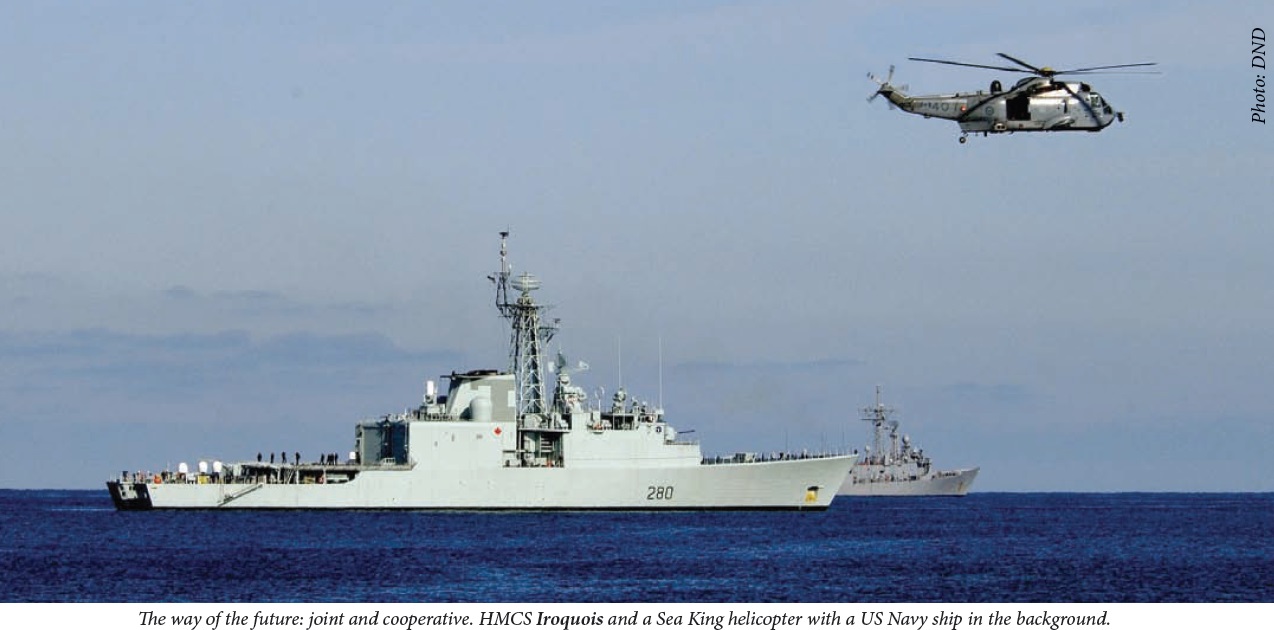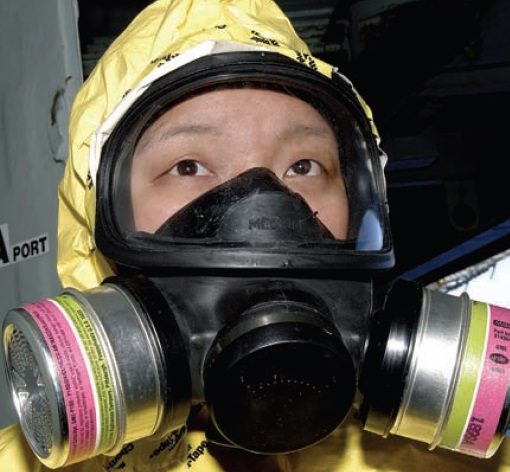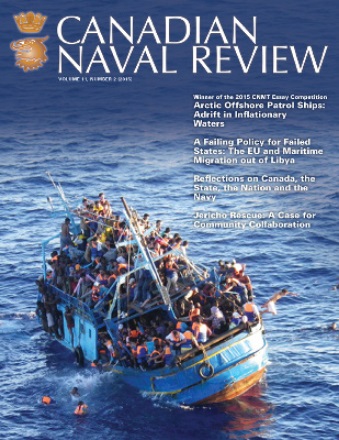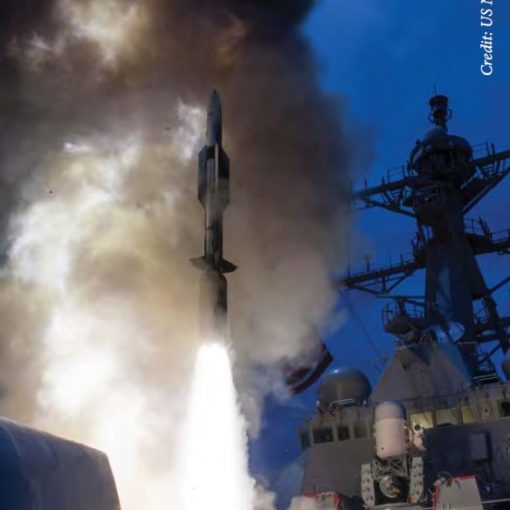Canada will be recapitalizing much of the naval and coast guard surface fleets under its National Shipbuilding Procurement Strategy (NSPS). Much of this promised $38 billion is earmarked for 15 Canadian Surface Combatants (CSCs). These ships are expected to be the new workhorse of the Royal Canadian Navy’s (RCN), designed to replace three Iroquois-class destroyers long past their expected service life and a fleet of 12 Halifax-class frigates to be retired by the end of next decade.
It is perhaps no surprise that this fleet-replacement plan has generated a fair share of criticism, not least due to its exorbitant cost. As Mark Collins points out, these ships are meant to recreate a fleet structure originally geared to providing an anti-submarine warfare (ASW) capability against Soviet subs during the Cold War. As such, they seem hardly required in today’s strategic environment. He goes on to advocate the acquisition of a greater number of smaller ships, such as offshore patrol vessels (OPVs).
These criticisms should not be casually discounted. Much of the RCN’s present fleet does have its origins in the Cold War. The high cost of the CSC is reason enough to be at least cautious of this project, especially given the government’s revelation about the full life-cycle cost of these ships exceeding $100 billion. Moreover, the Auditor General is expected to be highly critical of the shipbuilding plan’s financial projections in his forthcoming report, due for release later this month. As such, one can’t dismiss alternatives out of hand, even radical ones like prioritizing OPVs over traditional surface combatants.
Yet these proposals shouldn’t be taken at face value either, in so far as the lessons of naval history aren’t necessarily so straightforward. True, Canada’s navy initially opted for a relatively unbalanced fleet largely primed to undertake ASW against the Soviet Union. But the RCN only did so in close partnership with the Americans, within a trans-Atlantic alliance framework that envisioned a prolonged land war in Europe, depended on sending troop reinforcements and resupply by sea, and required sizable ASW forces primarily to provide convoy protection as a result.
Canada’s ASW specialization was specifically geared towards safeguarding allied sea lines of communication against Soviet subs, in order for convoy support to reach Europe. It really wasn’t about guarding North America against Soviet nuclear-armed submarines per se. At most, such strategic ASW was only seen as a latent role within the RCN’s existing surveillance duties. The reason is simple - the Soviet Union soon had intercontinental sea-launched missiles that could hit targets from submarines based in its home waters.
This distinction is important because Canada had doubts on the utility of ASW specialization by the 1960s, when it seemed the Central Front could go nuclear very quickly - a fact that made the notion of conventional reinforcement of Western Europe seem unlikely and ASW convoy protection potentially unnecessary. Such doubts soon coalesced into a Canadian desire to downgrade it traditional ASW role, which culminated in Trudeau’s emphasis on other, less onerous maritime tasks, such as sovereignty protection - and considerably less funds for RCN fleet-replacement plans.
Yet such a benign threat assessment also proved notoriously short-sighted, especially in light of NATO’s emphasis on boosting its conventional capabilities under Flexible Response and the Soviet’s growing blue-water capabilities by the 1970s. Indeed, Canada had to reverse course with its 1975 Defence Structure Review, which finally opened up funding to procure a fleet of Halifax-class frigates and Aurora maritime patrol aircraft, among other items.
So what does this tell us about today’s RCN?
First, it reveals the possibility of being mistaken about the strategic environment. Canada thought ASW had become obsolete but reversed course rather quickly. As such, one should be wary of procuring OPVs under the assumption that the absence of state-to-state conflict will continue indefinitely – especially given the decades-long service life of these platforms. Circumstances can quickly change, especially given Canada’s tendency to follow Washington’s lead on strategic policy matters. An important consideration is therefore flexibility. In its absence, the RCN could find itself with neither the funds nor the time to reverse course, therefore creating an even larger capability-commitment gap than in the past.
Second, it also shows the need for caution when it comes to eschewing capabilities and platforms. Canada opted for an unbalanced (albeit flexible) ASW fleet in the earlier Cold War. In so doing, however, the RCN also permanently lost some key capabilities, such as carrier aviation when it retired HMCS Bonaventure. Even the Defence Structure Review only represented a partial reversal, in so far as it did not stem the decline in the RCN’s fleet – with even its plans for 24 frigates later halved when the Halifax-class was finally built.
Even then, Canada at least enjoyed a smaller fleet composed of relatively higher-end warships. The same cannot be said if the Canadian navy opts for OPVs. More capable warships might still be retained. But the RCN will likely have relatively few high-end ships available to either participate in coalition operations or help maintain continuing levels of seamless interoperability with key partners, like the US Navy. At worst, the RCN might even have to forgo certain capabilities no longer seen as necessary, such as area air defence. One need only look at the recent controversy over Australia’s acquisition of three so-called Air Warfare Destroyers (see here, here, and here).
Lastly, it is also important to understand the rationale of why the RCN’s acquired the Halifax-class frigates in the first place. It really comes down to a platform’s capabilities - and not simply defined as its capacity for ASW. At its most basic, large ships have more room for holding different weapon systems, communication equipment, and therefore capabilities, making them truly multi-purpose warships equally at home in both high-end operations and more constabulary tasks, in a manner not easily replicable by smaller OPVs. This gives them significant operational flexibility, to say nothing of versatility in the event that they are refitted with new capabilities in the future.
One need only look at the Iroquois-class destroyers, which were upgraded with an area air defence system in the 1980s, or the Halifax-class frigates now in the midst of a refit to improve their command and control and air defence capabilities. Smaller ships simply have a reduced capacity to undertake important mid-life modifications. It is difficult to overestimate the importance of a warship’s operational flexibility and architectural versatility, especially in today’s more fluid and uncertain strategic landscape.
Another crucial capability raised in the Halifax-class procurement is operational logistics. Sea-keeping, range, and capacity to hold supplies, all are crucial enablers for expeditionary operations. But they are also important for domestic operations too, especially for a country like Canada marked by a long coastline and sizable maritime zone, to say nothing of being limited to two replenishment ships for the foreseeable future. Major warships generally hold a certain advantage in comparison to their smaller counterparts here.
The Auditor General’s report, once it’s finally released, promises to only heighten the controversy over the CSC procurement. Critics will likely decry the cost of these ships and point to the value of smaller vessels, whether OPVs or possibly even corvettes. They might even have a point about how Canada’s current fleet has its origins in the Cold War. It’s true that such a fleet structure might be historic. But, as this analysis shows, it also doesn’t mean it is necessarily anachronistic.
David S. McDonough is a SSHRC post-doctoral fellow in the Department of Political Science, University of British Colombia and a research fellow in the Centre for Foreign Policy Studies at Dalhousie University. He can be followed on Twitter @DS_McDonough.





